PCR packaging – Mura Technology’s flagship advanced plastics recycling plant opens in Teesside 08-11-2023
PCR packaging
Crude Oil Prices Trend
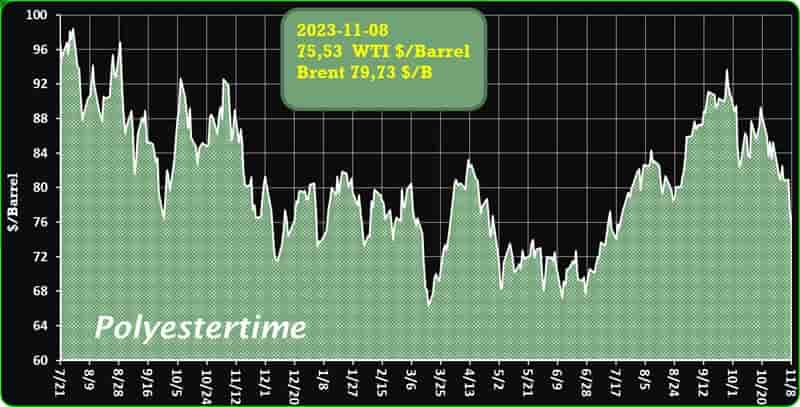
Crude Oil Prices Trend by Polyestertime
Mura Technology’s flagship advanced plastics recycling plant opens in Teesside
MURA Technology’s first site, ReNew ELP, which turns ‘unrecyclable’ plastics that would usually be sent to incineration or landfill into liquid hydrocarbon products, has begun commissioning.
Based at the Wilton International industrial site in Teesside, UK, the facility uses a novel approach called Hydrothermal Plastic Recycling Solution (HydroPRS) to convert waste plastics that cannot be processed via traditional mechanical means, such as flexible films and multi-material rigids, back into the chemical and oil products they were made from. These in turn can then be used as feedstocks in the manufacture of new plastics and other materials. PCR packaging
Mura says the recycling process takes just 30 minutes, and it works by using supercritical water – water under high pressure and high temperature – to help break down the carbon-carbon bonds in plastic.
First, the plastic is shredded and any contaminants such as grit, glass and metal are removed. The shredded plastic mix is then melted and pressurised, before supercritical steam is applied.
The mix is further heated, and plastics are broken down into liquid hydrocarbons and gas. After the conversion, energy reclaimed from depressurisation is used to drive product separation, while the recovered process gas is reused to generate the critical steam.
The end products span a range of valuable, liquid hydrocarbon products including naphtha, distillate gas oil, and heavy gas oil which is used to make chemicals, oils, speciality plastics and wax. PCR packaging
Vitally, new materials made from the recycled feedstock are suitable for use in food-contact packaging material. This is currently a problem area for mechanical recycling systems whose products do not meet European Food Standard Agency requirements.
Described as a “world-first” by Mura, the facility, which was awarded a £4.42m (US$5.5m) grant from Innovate UK, aims to process about 20,000 t/y of plastic waste, rising to 80,000 t/y when the site is fully complete. This will reduce CO2 output by an estimated 120,000 t/y compared to incineration. And, as there is no limit to the number of times the same material can be recycled, HydroPRS has the potential to significantly reduce single-use plastics and permanently increase material circularity in the plastics industry, the firm said. PCR packaging
Mura expects to deliver the first recycled hydrocarbon products from the plant to their off-take customers in early 2024.
Steve Mahon, Mura Technology’s CEO, hailed the opening of the new facility as “a ground-breaking” achievement and the culmination of four years of dedication. “Our HydroPRS process is unlocking a new market for plastic waste, creating value and keeping both plastic and carbon in circularity,” he said. ”The technology works alongside existing mechanical recycling to ensure no plastic types are considered ‘unrecyclable’ and require incineration or landfilling.”
Along with the Teesside plant, the firm has a licencing agreement with Mitsubishi Chemical Corporation (MCC) which is developing a 20,000 t/y HydroPRS plastics recycling facility in Japan. PCR packaging
Mura is also eyeing potential sites in the USA and Germany, as it looks to recycle one million tonnes of plastic annually by the end of the decade.
Plastic problem
Poor plastic waste management has become such a problem globally that around eight million tonnes of it ends up in our oceans each year. To help industry make the changes needed to curb the spread of more plastic waste, trade body Plastics Europe has recently revealed a “radical plan” to completely redesign the European plastics sector.
In its report, the organisation recommends a shift towards circular practices such as recycling, biomass-based production, and carbon capture, as well as investing in joint infrastructure for hydrogen, renewable energy, and CCS. It also calls on the EU to develop an equivalent to the US Inflation Reduction Act (IRA) to support climate and low-carbon programmes. PCR packaging

Innovation and efficiency in the production of PET and rPET bottles and preforms: the partnership between PDG Plastiques and Piovan
In the latest edition of the Spotlight, Piovan Group tells us about its partnership with PDG Plastiques. At a time when innovation and efficiency are key words, companies are constantly looking for improvements. This includes French company PDG Plastiques, specialising in the design and production of PET preforms, bottles and containers. With two production plants and an annual output of over 2.2 billion preforms, PDG Plastiques is a leader in its field. But what are the enablers of this success? PCR packaging
The needs of PDG Plastiques
With an eye for innovation, PDG Plastiques has faced increasing challenges related to the need to combine production efficiency with the use of recycled raw materials in a closed loop, always with the ultimate goal of a top-quality finished product. PDG needed a technology partner that could provide advanced solutions tailored to its specific needs. Employee training was also a key factor.
The solution provided by Piovan
Piovan, the world’s leading supplier of industrial automation systems, was the answer to these needs. The solution package provided to PDG Plastiques is a real technological enabler:
- Winfactory 4.0: advanced software for production process control and management, which eliminates human errors and ensures production repeatability. PCR packaging
- Winfactory includes Winenergy, an energy efficiency monitoring system that provides a comprehensive analysis of energy consumption in real time, and Winflo, a tool for monitoring and controlling industrial cooling solutions, which turns data into useful information for optimising operations.
- Condenso: an oil condenser specially developed for the plastic recycling process. In addition to removing VOCs (Volatile Organic Compounds) from the process air during dehumidification, it also reduces energy consumption to a minimum thanks to a series of technological measures, including:
- A heat exchanger that transfers energy from the incoming hot air to the outgoing air, reducing the thermal gap with the dehumidifier with lower costs for both cooling and heating. PCR packaging
David Bankson of Fortis provides insights into PCR packaging’s growth
In an exclusive interview, Bankson highlights PCR packaging’s central role in addressing sustainability and reshaping the packaging industry’s environmental impact.
n an era where environmental concerns are paramount, the rise of post-consumer recycled (PCR) packaging is nothing short of a packaging industry revolution.
This innovative approach provides solutions to some of the most pressing sustainability challenges, redefining how we perceive packaging materials and their environmental impact. PCR packaging
To gain deeper insights into this transformation, we spoke with David Bankson, Director of Flexible Packaging & Shrink Sleeves at Fortis Solutions Group, a company that’s taking the lead in sustainable packaging innovation.
Redefining PCR packaging
PCR packaging is not merely a recycling initiative; it’s a comprehensive approach that repurposes post-consumer materials and transforms them into valuable packaging solutions.
This approach leverages materials such as polyethylene terephthalate (PET) and low-density polyethylene (LDPE) – two of the most common resins in flexible packaging – to create environmentally conscious packaging that meets the stringent demands of modern consumers and communities. PCR packaging
David Bankson explains, “PCR content in flexibles comes in the form of polyethylene terephthalate (PET) and low-density polyethylene (LDPE) solutions, two of the most common resins in flexible packaging today. PET is the most widely available recycled resin due to the significant infrastructure in recycling clear PET beverage bottles.”
PCR packaging’s remarkable evolution
One of the remarkable aspects of PCR packaging is that it is nearly indistinguishable from packaging made with brand-new materials. Thanks to advances in recycling technologies, PCR resins, especially chemically recycled PET, have achieved a level of parity with their virgin counterparts. PCR packaging
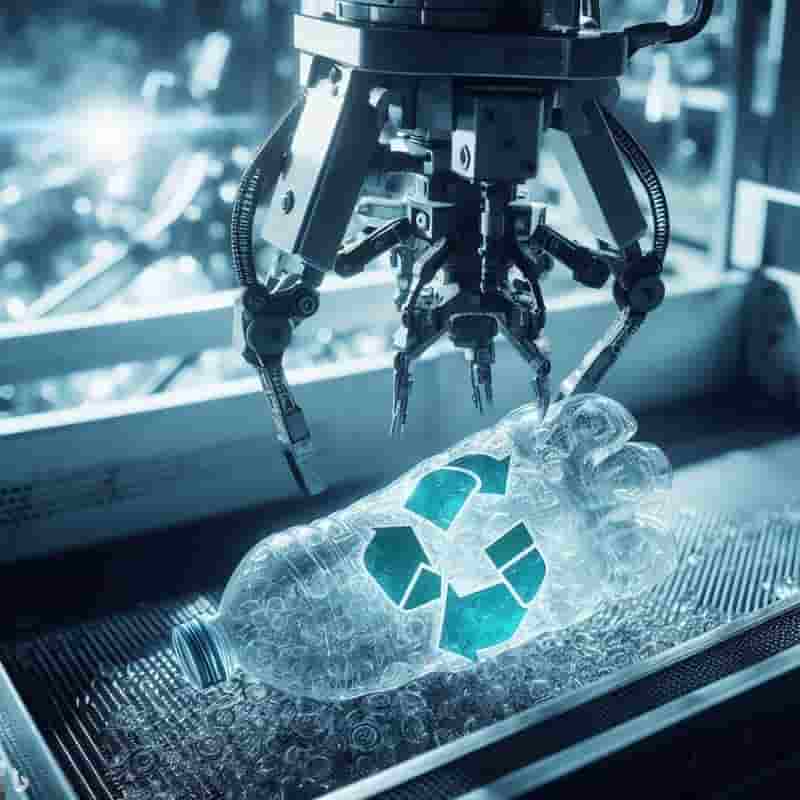
The prices of metals used in electric vehicle batteries have plummeted this year, after soaring in 2022
Lithium, nickel and cobalt are now among the worst performing commodities, as EV sales growth slows down and supply from various countries increases. This is a relief for car makers and battery producers, who can lower their costs and prices. However, it also reflects the challenges of balancing supply and demand in a fast-changing market.
Lithium prices have dropped by almost 70% this year, while nickel has fallen by around 40%. Cobalt also declined. These metals are essential for making batteries that power electric vehicles, which are expected to dominate the car market in the future. However, the demand for these metals has not kept up with the supply, which has expanded rapidly in China, Indonesia and the Democratic Republic of Congo. PCR packaging
Electric vehicle sales are still growing, but not as fast as before. Higher interest rates and uncertain economic conditions have dampened consumer demand. In China, the largest EV market, sales growth slowed down compared to last year. As a result, there is a “huge buildup” of Chinese-made batteries, which exceeds demand by two times, according to analysts from ANZ Group Holdings Ltd. Battery makers have cut down their production, and the prices of lithium, nickel and cobalt are likely to stay low in the near term, the analysts said. PCR packaging
The lower metal prices are good news for automakers and battery makers, who can benefit from lower costs and pass them on to consumers. For example, BYD Co, China’s largest EV maker, and Contemporary Amperex Technology Co, China’s top battery maker, have both profited from lower lithium prices.
The metal prices have also been affected by several developments in the production side. China has increased its lithium mining, while Indonesia has become a major source of cheap nickel, thanks to Chinese-financed plants. More cobalt is also being produced, especially in the Democratic Republic of Congo and Indonesia.
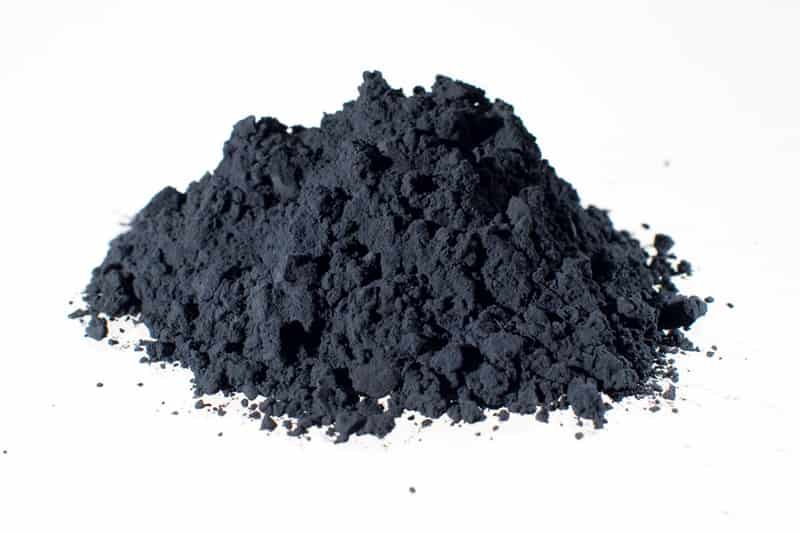
New ITC Packaging technology injection moulds thin-wall PET containers in single step
ITC Packaging has worked with BMB SPA and Novapet to unveil TWI-PET, a new technology that produces thin-wall, flexible PET packaging in a one-step injection moulding process.
The system produces transparent flexible packaging that reduces wall thickness by 15% compared to other injection moulded containers – optimizing the weight of the pack and the amount of raw material needed to produce it. PCR packaging
Initial industrial tests have reportedly achieved high performance and efficient energy use by reducing the injection cycle by up to 10%. Up to 30% recycled food-grade PET can be utilized, the company continues – helping customers align with legislation across Europe.
Containers produced with TWI-PET can also feature IML decoration with labels made of PET or PP, both of which are said to be recyclable. The resultant packaging is set to apply to dairy products, nuts, dried food, sweets, and other food that requires highly transparent, heat-sealed, and high-barrier packaging.
The technology made its debut at Fakuma 2023 – as did a lightweight, thin-wall, injection compression moulded polypropylene cup from Netstal. PCR packaging
Earlier this year, ITC Packaging’s Bio2Bio bioplastic solution was implemented into its blow-moulded container portfolio for the food and cosmetics markets. PCR packaging
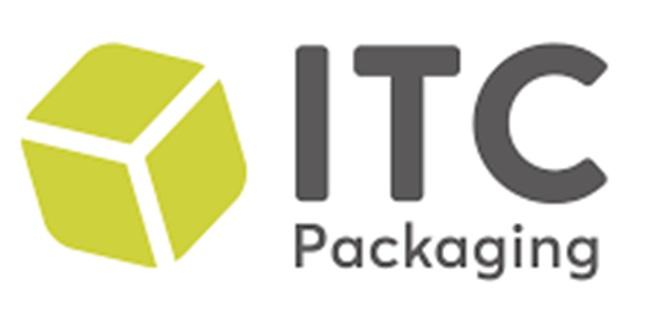
Will the fashion industry outgrow PET bottles if chemical recycling for textiles takes off?
As concerns about fast-fashion waste gain more attention, well-funded startups and longstanding chemical companies are starting to scale up the textile recycling market.
The problems associated with apparel waste, intensified by fast fashion, have been piling up for years and gaining increased attention. A site in Chile’s Atacama Desert has become known for mountains of used apparel, and study after study shows the potential effects of plastic microfiber pollution on ecosystems and human health.
Many apparel brands now use polyester made from post-consumer PET bottles in an effort to improve the sector’s sustainability.
But using waste PET as apparel feedstock is “not a perfect solution,” said Rachel Kibbe, CEO of the consultancy Circular Services Group. PCR packaging
In 2022, along with resellers, fashion brands and other supply chain partners, Kibbe convened the American Circular Textiles group to advocate for new fashion policies.
“It has been a topic of importance in our industry for a while,” said Kibbe, referring to using bottles as textile feedstock. Textile suppliers and brands began labeling their products as recycled, which she said “made brands feel good at first.” But because textile-to-textile recycling technology is still in the early stages, this may risk confusing customers about how to manage their worn-out clothes and leaves landfill or incineration as the likely end-of-life option. PCR packaging
In the first 15 years of this century, the amount of apparel produced doubled while the amount of time consumers kept clothes in their wardrobes fell by 40%, according to 2017 data compiled by the World Bank. In recent years, apparel resellers have found profitable ways to extend apparel lifecycles. But much of the industry’s wastefulness can’t be undone. U.S. EPA data shows that the amount of clothing and footwear in the MSW stream has grown from an estimated 6.47 million tons in 2000 to 11.9 million tons in 2015.
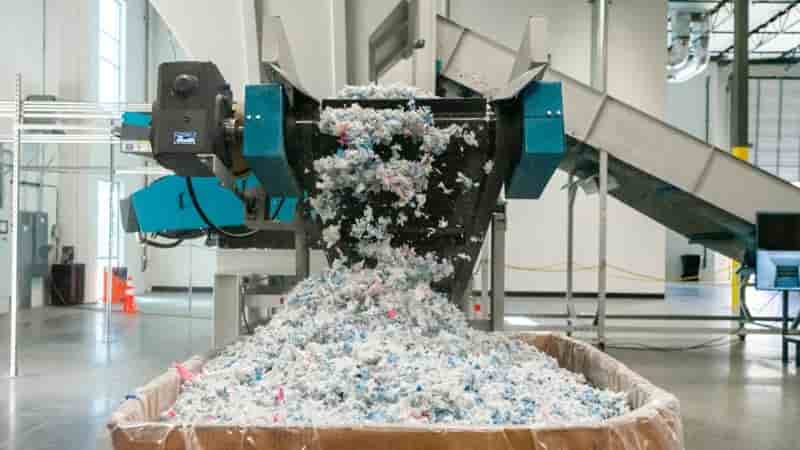
Lenzing sees no end to current slump
In addition, after the successful conversion of a production line in Nanjing, China, in the first quarter of 2023, Lenzing has now completed its conversion and modernisation measures at its site in Purwakart, Indonesia, to convert to speciality viscose and significantly reduce emissions. Viscose fibres produced in Indonesia under the Lenzing Ecovero and Veocel brands now carry the EU Ecolabel for environmentally responsible products and services. PCR packaging
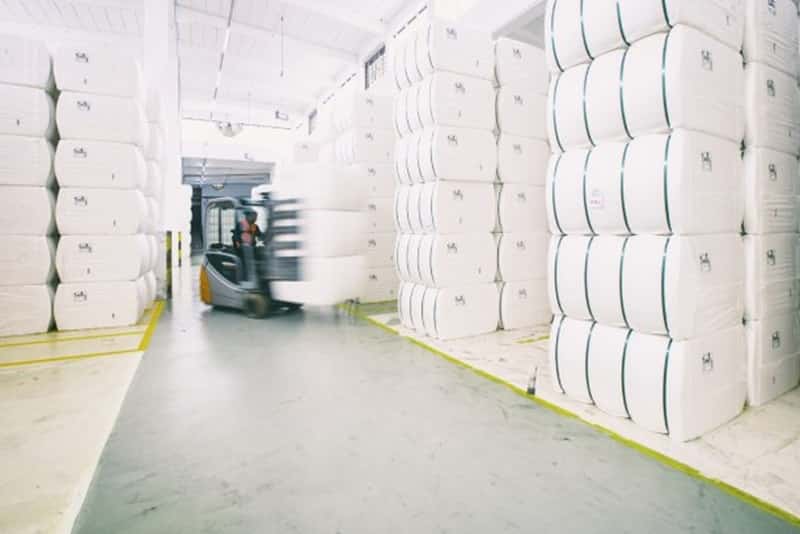
Plastic waste – Chemical recycling ‘not the miracle cure’ for plastic waste 07-11-2023
PCR packaging
